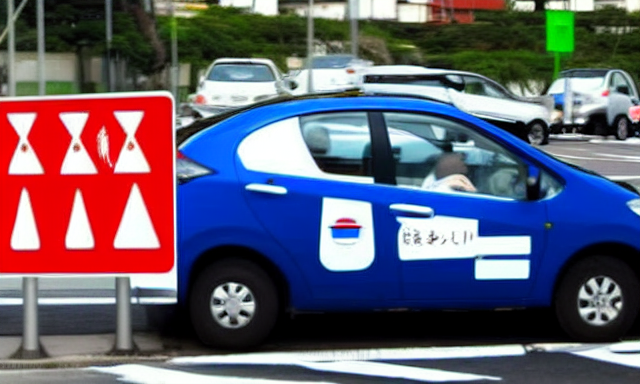Driving in Japan can be a unique and challenging experience, especially for newcomers. The complexity of Japanese roads and driving culture is influenced by several factors that contribute to the perceived difficulty. In this comprehensive article, we will explore the reasons behind the challenges of driving in Japan.
1. Left-Side Driving:
One of the most noticeable differences for many foreign drivers is that Japan follows left-side driving. For those accustomed to right-side driving, this shift can be disorienting. Navigating traffic circles, intersections, and overtaking other vehicles requires a different set of instincts, making it initially challenging for newcomers.
2. Narrow Roads:
Japanese roads are often narrower than those in many Western countries. This is due to Japan’s geographical constraints, limited available land, and urban planning. Narrow roads can be intimidating, especially when passing other vehicles or encountering oncoming traffic on winding mountain roads.
3. Complex Road Signage:
Japanese road signage can be quite intricate, and many signs are written in Japanese characters. While major highways and tourist areas may have bilingual signage, rural areas often do not. This can pose challenges for non-Japanese speakers when trying to decipher directions, speed limits, or warnings.
4. Highway Tolls:
Japan has an extensive network of well-maintained highways, but they come at a cost. Tolls can be expensive, and the process of paying tolls at multiple points during a journey can be confusing for visitors. Electronic toll collection systems (ETCs) are commonly used, requiring registration and an understanding of how they work.
5. Traffic Congestion:
Japan’s major cities, like Tokyo and Osaka, are known for heavy traffic congestion during peak hours. Navigating through these congested areas can be stressful for drivers, and parking can be both scarce and expensive.
6. Parking Challenges:
Parking in Japan can be a daunting task, particularly in urban areas. Space is limited, and parking lots often require advanced reservations or have strict time limits. Illegally parked vehicles may be towed, and fines can be substantial.
7. Driving Etiquette:
Japanese drivers are known for their adherence to strict driving etiquette. They are expected to be courteous, use turn signals diligently, and yield to pedestrians. Failing to follow these norms can lead to frustration among fellow drivers.
8. Complex Intersections:
Japan’s urban areas are filled with complex intersections and junctions. The crisscrossing of multiple roads and pedestrian crossings can be bewildering, and it’s crucial to follow traffic signals diligently.
9. Weather Variability:
Japan experiences various weather conditions throughout the year, from heavy snowfall in Hokkaido to typhoons in Okinawa. Driving in adverse weather, especially during winter, can be treacherous, and winter tires are often recommended.
10. Driving License Requirements:
For foreigners residing in Japan, obtaining a Japanese driver’s license can be a bureaucratic challenge. The process may involve written and practical tests, depending on your home country’s license and the specific requirements of your local licensing center.
11. Language Barrier:
For those who do not speak Japanese, communication can be a hurdle when interacting with police officers or navigating through areas with limited English-speaking support. Basic knowledge of Japanese road signs and common phrases can be beneficial.
12. Public Transportation Availability:
Japan boasts an extensive and efficient public transportation system, which is often more convenient than driving, especially in large cities. Consequently, some areas may not have well-maintained roads or parking facilities.
Why are the driving tracks in Japan hard to drive well?
While driving in Japan can pose challenges, it is important to note that millions of people, including many foreigners, drive safely and successfully in the country every day. The key to a successful driving experience in Japan is preparation, understanding local road rules, and respecting the country’s unique driving culture. Whether you’re a resident or a visitor, taking the time to familiarize yourself with the intricacies of driving in Japan can make your journey on its roads both enjoyable and safe.
Do you want to master the driving circuits to get your driver’s license?
Do you want to master the driving rules to get your driver’s license?
Do you want to master driving tricks to get your driver’s license?
Indicate that you saw this message on our website and get a special discount.












